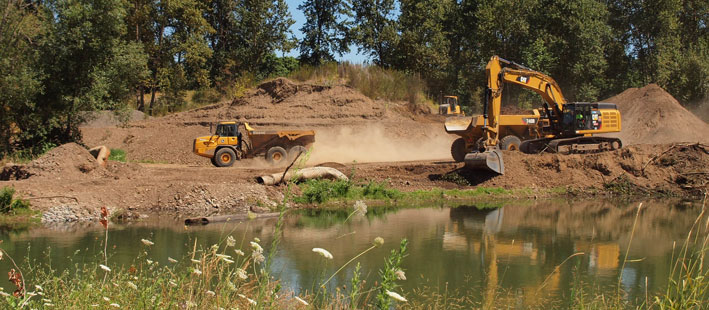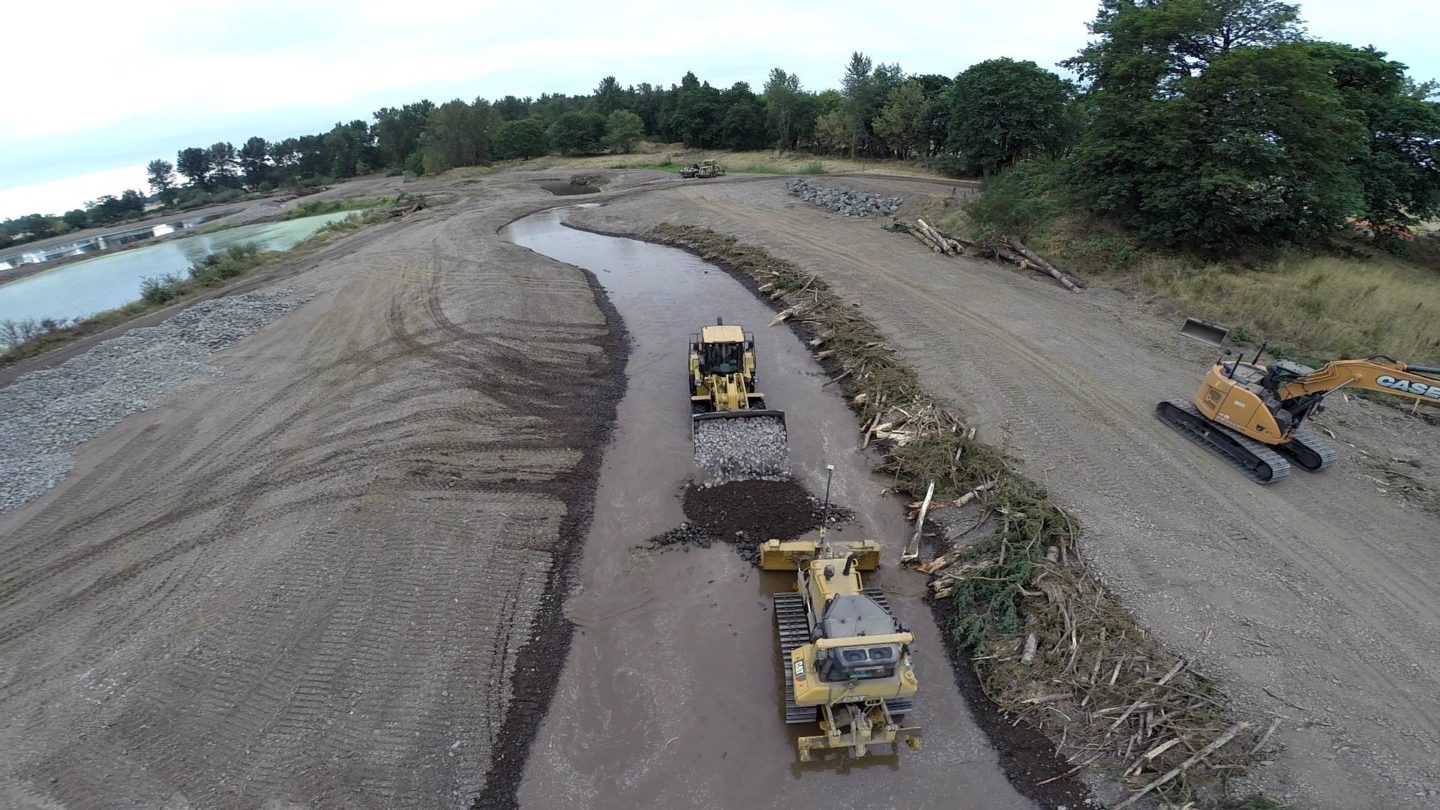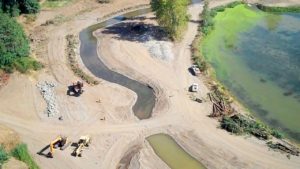
Restoration of the former Coburg Aggregate gravel pits on Green Island is all about working with the water we have.
If you ask Chris Vogel, the $1 million restoration project happening this summer on Green Island is all about flushing.

“We’ll be working with the same amount of water we used to get on site,” says Chris, who has been Green Island‘s restoration Project Manager for six years. “It’s just where it goes and how and how long it stays that’s different.”
Flushing is simple: in a healthy river system, you’ve got water in, and water out. When a side channel fills up and then empties out, at least a couple times a year during high water events, the river flushes any ponded water and the critters living in it down the channel. In a natural area, this flushing provides a huge range of benefits for fish and wildlife.
The CARP site is in an active side channel of the Willamette River. We call this area the historic McKenzie River channel, because the main channel of the McKenzie River flowed right through here before the big 1964 floods which moved the McKenzie-Willamette confluence to where it is today, just south of Green Island. The channel has water year round, even more in the winter.
But it’s far from a natural area.
An altered landscape
CARP stands for Coburg Aggregate Reclamation Project. Until the McKenzie River Trust purchased this 56-acre parcel in 2010, the site was mined for sand and gravel. And that created steep gravel pits with few places for native plants to take hold.
“Before restoration, when that historic McKenzie River channel filled up, it would overtop into the pits. Lots of fish – both native and non-native – would get trapped until the next high flow,” says Chris.
In other words: no flushing.
The fish didn’t have a way to escape back into the channel as the water dropped. So, stranded, the fish lived their lives in the pits. “More frequent flushing will get them out,” says Chris.
Restoration solutions
The solution is to use heavy construction equipment to grade the slopes to a more natural rise of one foot up for every ten feet out. And that’s exactly what we did this summer at CARP, hiring the Wildish Construction Company to move 125,000 cubic yards of gravel to create those slopes and the right entry and exit points for the ponds to be much friendlier to native Willamette spring Chinook salmon, Oregon chub, and other fish and wildlife.

This winter, we’ll plant thousands of willows and other native trees and shrubs along the pond edges. As the plants grow up, they’ll offer fish plenty of places to hide from predators.
The next time the water rises, we’ll see on the ground how all this work makes a difference for salmon.
“We’re always looking for ways to give life to the river,” says Joe Moll, Executive Director of MRT. “This is one of the best investments we can make to do that.”
Special thanks
The Bonneville Power Administration, Oregon Department of Fish and Wildlife, Oregon Watershed Enhancement Board, and Meyer Memorial Trust’s Willamette Special Investment Partnership provided funding for CARP restoration. Additional funds were provided by The Nature Conservancy Portland General Electric Habitat Support program, and individual donors like you.
